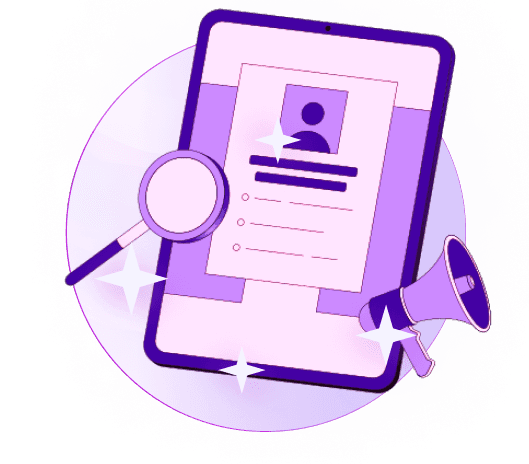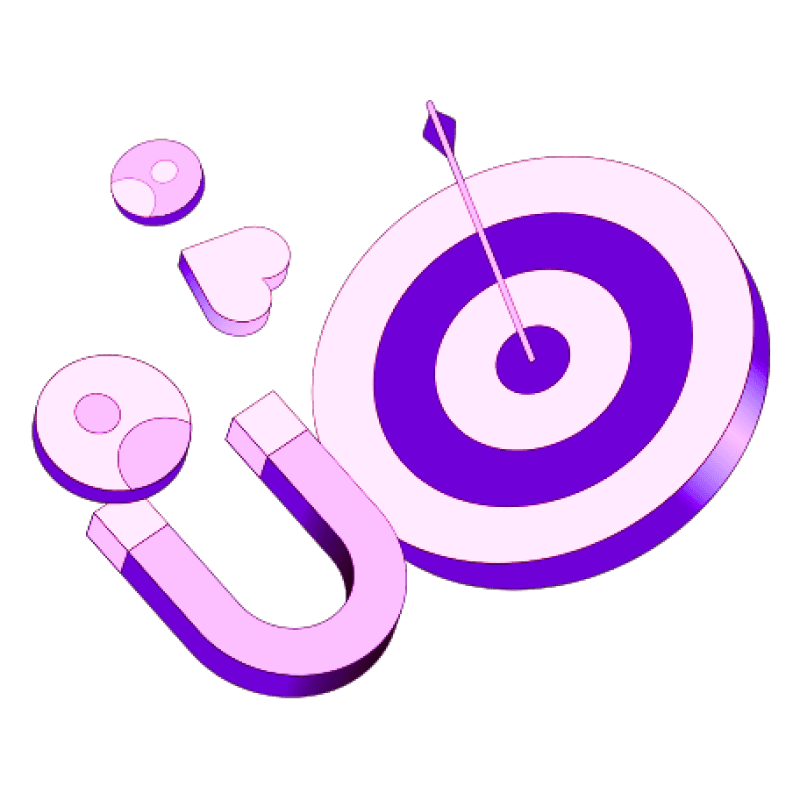Blogs
Articles

How to Create Sales Enablement Content That Actually Converts
Sales data reveals that 78% of buyers say salespeople fail to provide them with relevant sales enablement content they need. This explains why 58% of pipelines come to a halt - sales teams simply don't add enough value to their buyers' needs.
The numbers tell an interesting story. A buyer completes 57% of their purchase experience before they even talk to a sales representative. This makes sales materials and detailed content strategy crucial to sales enablement. Companies that line up their sales and marketing efforts see 38% higher sales win rates and grow revenue 24% faster.
This piece will show you how to create sales enablement content that converts. You'll learn everything from basic principles to a step-by-step strategy that gives your sales team the ability to succeed.
What are sales enablement content?
Sales enablement content consists of carefully prepared materials that strengthen sales teams with tools and resources to sell better. These materials connect marketing and sales teams to maintain consistent communication with potential buyers during the sales cycle.
Two primary categories of sales enablement content exist:
Internal content - Resources specifically created for your sales team's use, including:
Battle cards with competitive differentiators
Objection-handling scripts
Product training materials
Short training videos
Sales playbooks
External content - Customer-facing materials that deliver real value, such as:
Case studies and testimonials
Product demo decks
Detailed industry reports
Explainer videos
Datasheets with product specifications
E-books on industry challenges and trends
Sales enablement content forms the foundation for effective selling by giving representatives the right information at the right time. Your team can confidently communicate your product's value and show industry expertise throughout each stage of the buyer's experience.
Strong sales enablement content boosts team efficiency significantly. A centralized resource system helps eliminate wasted time looking for information, so reps can focus on selling. Companies that line up their sales and marketing efforts achieve 38% higher win rates and 24% faster revenue growth.
What is the concept of sales enablement?
Sales enablement serves as a strategic framework that connects marketing, sales, and customer success teams. The framework gives representatives the knowledge, tools, and content they need to sell better and maintain consistency. What started as a basic support function in the early 2000s has grown into a strategic necessity for businesses that want to succeed in complex B2B sales environments.
This strategy goes beyond providing materials. It creates unity in your entire go-to-market approach. Companies with strong sales enablement practices see a 49% win rate on forecasted deals, while others achieve only 42.5%. Sales increase between 6-20% for 76% of organizations that implement effective sales enablement programs.
Sales enablement builds on three key pillars:
Knowledge - Sales professionals gain deep product understanding and master best practices through training and coaching.
Content - Teams use presentations, templates, reports, datasheets, and demos to show benefits and explain offerings to customers.
Tools - Technology streamlines processes and creates better customer experiences through CRM software and coaching platforms.
Sales enablement aims to create steady, flexible revenue growth and build lasting customer relationships. Each buyer interaction becomes meaningful through knowledge-based conversations with prospects.
Types of Sales Enablement Content That Drive Conversions
Sales enablement content helps buyers make decisions faster and gives your team the tools to close deals quickly. Studies show that companies with properly hosted content management see a 25% improvement in close rates. Let's get into the most meaningful types of content that consistently turn prospects into customers.
Case studies and testimonials
Case studies showcase ground examples of how your product solved specific challenges. These become powerful tools when buyers evaluate their options. Numbers speak volumes - metrics like "increased efficiency by 30%" or "90% ROI on professional education" serve as compelling social proof. Video testimonials create an authentic form of validation—82% of participants agreed video coaching enhanced their customer communication.
Product one-pagers and spec sheets
A product one-pager puts essential information on a single page that sales reps can reference quickly. These brief documents include your value proposition, easy-to-read bullet points, and a clear call-to-action. One-pagers boost engagement and follow-through substantially when tailored to the prospect's buying stage. Product datasheets complement this by providing detailed technical specifications for informed decisions.
Sales scripts and email templates
Good sales scripts help your team deliver consistent messages and guide conversations with confidence. Email templates save time, and research shows personalized templates can achieve 60% or higher open rates and 30% or higher response rates. Your teams can scale outreach efforts while keeping communications personal with these resources.
Explainer videos and demos
Explainer videos work best early in the sales process. About 59% of executives prefer video over text. Interactive product demos excel during evaluation stages because people process visual information 60,000 times faster than text. Companies report positive results from video content in both marketing (96%) and sales (56%).
Battle cards and competitor comparisons
Battle cards give sales teams competitive intelligence—78% of competitive intelligence leaders provide these resources to their sellers. These quick-reference documents help teams understand competitor offerings, handle objections, and express key differences. Some companies report 30% higher win rates after using battle cards.
Want to create sales enablement content that gets results? Visit Persana.ai to see how our platform can help.
Step-by-Step Process to Create Sales Enablement Content
Sales teams need a methodical approach rather than guesswork to create high-converting enablement content. These six strategic steps will help you develop materials that enable your sales team to close more deals.
1. Talk to your sales team
Schedule regular meetings with your sales representatives. They interact with prospects daily and understand customer pain points well. Ask specific questions about:
Which materials they use most frequently
What content helps them convert leads
Where gaps exist in your current content library
Common objections they encounter
Working together this way will give you truly useful resources—not just what marketing thinks sales needs. Studies show that nearly 65% of marketing content goes unused by sales reps because it's either irrelevant or hard to find.
2. Analyze customer conversations
Customer interactions hold valuable insights waiting to be decoded. Analytics of customer conversations reveals both spoken and unspoken elements. Research shows that nonverbal cues, body language, and tone of voice make up 93% of communication.
Think about using AI-powered conversation intelligence tools that can:
Record and transcribe sales calls
Identify patterns and recurring pain points
Flag successful sales techniques
Highlight objection handling approaches that work
3. Audit existing content
Take inventory of what you already have before creating new materials. This prevents duplicate work and shows real content gaps. During your audit:
Catalog all sales materials across storage locations
Assess each piece for effectiveness, accuracy, and relevance
Score content based on usage metrics and conversion success
Categorize content by sales funnel stage and target audience
4. Work with marketing and product teams
The best sales enablement happens when departments work together. Regular meetings between sales, marketing, and product teams help arrange everything properly. Your content will reflect accurate product information while addressing real sales challenges. Set up feedback loops where:
Sales provides frontline customer insights
Marketing contributes messaging expertise
Product teams supply technical accuracy
5. Create content tailored to buyer stages
Your content should match different stages of the buyer's journey:
Awareness stage (40%): Focus on educational content addressing problems
Consideration stage (40%): Highlight solution-focused materials
Decision stage (20%): Provide product-specific content that overcomes final objections
This distribution ensures prospects get the right information at each step of their decision-making process.
6. Review and refine with feedback
Set up reliable measurement systems to track content performance. Watch which materials sales representatives use, how prospects interact with them, and their effect on closing deals. Get regular feedback through:
Usage analytics
Sales team surveys
Win/loss analysis
Customer feedback
Streamline your sales enablement content creation process with Persana. Visit https://persana.ai/ to get started today.
Conclusion
Sales and marketing teams must work together to create effective sales enablement content. This piece shows how good content helps sales teams close more deals. It provides real value to prospects throughout their trip. The six-step process gives you a clear path to develop materials that convert instead of gathering digital dust.
Quality beats quantity in successful sales enablement strategies. Your team needs targeted content that tackles specific pain points and objections. Sales representatives with access to relevant, hosted materials spend more time building meaningful customer relationships and less time searching for information.
Your content library must adapt as customer needs change and products develop. Regular audits help keep sales enablement materials working. Teams should maintain consistent feedback loops and work together.
Take your sales strategy higher with the right tools. See how Persana.ai can help you create meaningful sales content.
Creating conversion-driving sales enablement content might feel overwhelming at first. The rewards make it worth the investment - higher win rates, shorter sales cycles, and more revenue. Sales enablement has become vital for companies to succeed in today's competitive digital world. These practices will give your sales team everything they need to hit their targets consistently.
FAQ
What are the three pillars of sales enablement?
Several frameworks exist, but the most recognized three pillars of sales enablement come from reliable sources. These pillars are the foundations of any successful sales enablement strategy:
Knowledge Sharing - This pillar helps capture and distribute best practices, success stories, and competitive intelligence. It creates a peer-to-peer content engine where sellers become teachers and show what good selling looks like. The team can find critical information right when they need it.
Collaboration - The second pillar helps revenue and buying teams line up through modern cooperative experiences. The entire revenue team can identify what works and solve problems together by centralizing data about seller and buyer actions.
Enablement Technology - The third pillar combines AI-powered technology that scales success smoothly. Modern enablement platforms employ AI-generated insights and automation within the workflow to improve efficiency and make smarter decisions.
What are the KPIs for sales enablement?
Success in sales enablement requires tracking specific key performance indicators that show real business effects:
Win rate/conversion rate - The percentage of deals won over a specific period
Average deal size - The typical value of closed deals
Sales cycle length - The time required to close deals from first touchpoint
Quota attainment - The percentage of sales reps meeting or exceeding targets
Pipeline generation - The volume of new opportunities created
Content and Tool Effectiveness:
Content accessed by buyers and sellers - Tracking engagement with sales materials
Content-influenced revenue - How content connects to closed-won opportunities
Training completion and engagement rates - How often sellers complete and revisit training
Efficiency Indicators:
New hire ramp time - The core team's speed to reach full productivity
Actual selling time - Time reps spend on selling activities versus administrative tasks
Discovery call-to-meeting conversion - Initial calls that convert to follow-up meetings

Create Your Free Persana Account Today
Join 5000+ GTM leaders who are using Persana for their outbound needs.
How Persana increases your sales results
One of the most effective ways to ensure sales cycle consistency is by using AI-driven automation. A solution like Persana, and its AI SDR - Nia, helps you streamline significant parts of your sales process, including prospecting, outreach personalization, and follow-up.



